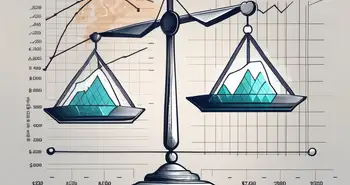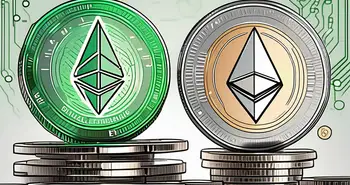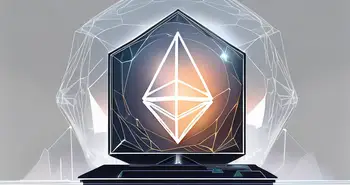The Ethereum Ecosystem in Focus Following ETF Approval
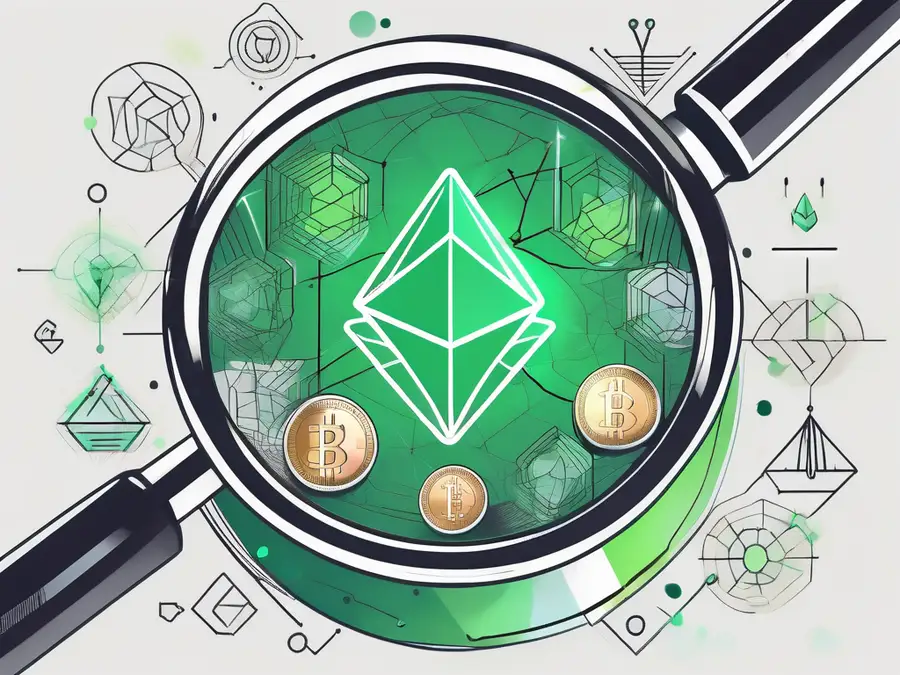
The approval of the Ethereum ETF in early May has set the stage for spot trading to begin today. This landmark event has thrust Ethereum and its ecosystem tokens into the limelight, with some tokens experiencing over a 10% increase in value in just one day. But what exactly constitutes the Ethereum ecosystem, and what does it encompass?
In this article, we will explore the significance of the ETF approval, delve into the intricacies of the Ethereum ecosystem, introduce the key participants in this thriving community, highlight the top Ethereum ecosystem tokens by market cap, and consider the possibilities that lie ahead for Ethereum.
Ethereum ETF Approval Marks a New Era
The approval of the Ethereum ETF opens up exciting opportunities for investors who want to gain exposure to the world's second-largest cryptocurrency. Up until now, investing in Ethereum was primarily limited to purchasing the actual digital asset. However, the ETF allows investors to gain indirect exposure to Ethereum without the need to manage private keys or navigate the complexities of crypto exchanges.
With the introduction of the Ethereum ETF, investors can now access the cryptocurrency market through a traditional investment vehicle, potentially attracting a new wave of institutional and retail investors looking to diversify their portfolios. This development not only signifies a growing acceptance of cryptocurrencies within the mainstream financial industry but also highlights the increasing demand for innovative investment products that cater to the evolving needs of market participants.
On their first day of trading, the eight newly launched Ethereum ETFs saw significant market activity, posting nearly $600 million in volume within the first half of the day. If the trading pace continues, these ETFs could reach approximately $940 million in volume by the end of the first day, which would be about 20% of the volume seen during the launch of Bitcoin ETFs. Analysts predict that the demand for Ethereum ETFs might not match that of Bitcoin ETFs due to Ethereum’s lower current funding rate and the inability to stake Ethereum when purchasing ETF shares. These factors could limit the attractiveness of Ethereum ETFs for institutional investors who may have sought arbitrage opportunities similar to those seen with Bitcoin ETFs.
This development illustrates both the potential and challenges facing the newly launched Ethereum ETFs. While they represent a significant step toward mainstream adoption, factors such as funding rates and staking capabilities will play crucial roles in determining their success and appeal to a broader investor base.
Understanding the Ethereum Ecosystem
The Ethereum ecosystem represents a diverse and dynamic community of developers, entrepreneurs, investors, and users who contribute to the growth and innovation of this groundbreaking blockchain platform. At its core, Ethereum is a decentralized, open-source, and programmable platform that enables the creation and execution of smart contracts, which are self-executing agreements with the terms directly written into the code.
Ethereum's versatility and flexibility have paved the way for a wide range of applications and use cases beyond just cryptocurrency. From DeFi platforms to NFTs and dApps, Ethereum offers a robust foundation for building innovative solutions that revolutionize industries.
As a long-time participant in the Ethereum ecosystem, the explosive growth of DeFi platforms was witnessed firsthand. Decentralized lending, yield farming, and automated market makers have reshaped the traditional financial landscape by providing users with unprecedented access to financial services without intermediaries. The disruptive power of these innovations has truly demonstrated the potential of Ethereum and its ecosystem.
Furthermore, Ethereum's commitment to ongoing development and improvement is evident in its transition from the energy-intensive proof-of-work consensus mechanism to the more sustainable proof-of-stake model with the upcoming Ethereum 2.0 upgrade. This shift not only addresses environmental concerns but also aims to enhance scalability and security, ensuring Ethereum's longevity and relevance in the rapidly evolving blockchain space.
Moreover, Ethereum's community-driven ethos fosters collaboration and innovation, with developers constantly exploring new ways to optimize the platform's capabilities. The vibrant ecosystem hosts hackathons, conferences, and online forums where ideas are shared, projects are incubated, and partnerships are formed, driving the continuous evolution of Ethereum and pushing the boundaries of what is possible in decentralized technology.
Key Participants in the Ethereum Ecosystem
The Ethereum ecosystem thrives on collaboration and the contribution of various stakeholders. Here are some key participants:

- Ethereum Foundation: The Ethereum Foundation is a non-profit organization that supports the development and advancement of the Ethereum platform through research, grants, and community building.
- Developers: Talented developers play a crucial role in building and maintaining the Ethereum ecosystem. Their contributions range from creating new dApps to improving the underlying infrastructure.
- Miners: Miners validate transactions and secure the Ethereum network by solving complex mathematical problems. In return, they are rewarded with Ether (ETH) for their computational power.
- Investors: Investors provide the necessary capital to fund projects, drive innovation, and propel the growth of the Ethereum ecosystem. They play a vital role in shaping the future of Ethereum.
Another essential participant in the Ethereum ecosystem is the Smart Contract Developers. These individuals specialize in writing self-executing contracts with the use of Ethereum's programming language, Solidity. Smart contracts automate the execution of agreements and transactions, enhancing efficiency and trust within the ecosystem.
Furthermore, Decentralized Application (dApp) Users are integral to the Ethereum ecosystem. These users interact with various dApps built on the Ethereum platform, ranging from DeFi applications to gaming platforms. Their engagement and feedback help dApp developers improve user experience and functionality, driving further adoption of Ethereum-based applications.
Top Ethereum Ecosystem Tokens by Market Cap
While Ethereum (ETH) remains the dominant token within its ecosystem, there are numerous other tokens that have gained significant traction. Here are some of the top Ethereum ecosystem tokens ranked by market capitalization:
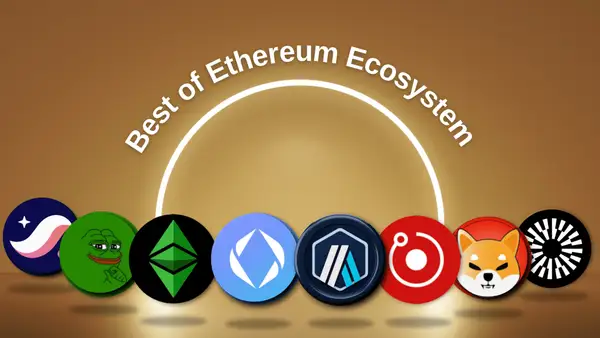
- Tether (USDT): As a stablecoin pegged to the US dollar, Tether has become a popular choice for traders seeking stability and liquidity within the Ethereum ecosystem.
- Chainlink (LINK): With its decentralized oracle network, Chainlink provides reliable and tamper-proof real-world data to smart contracts on the Ethereum blockchain, enabling them to interact with the outside world.
- Uniswap (UNI): Uniswap is a decentralized exchange protocol running on Ethereum that allows users to trade various ERC-20 tokens directly from their wallets, without the need for intermediaries.
- Aave (AAVE): Aave is a decentralized lending and borrowing platform built on Ethereum. It allows users to lend their crypto assets and earn interest or borrow assets by using their collateral.
These tokens represent just a fraction of the vibrant ecosystem that revolves around Ethereum. Each token plays a unique role in expanding the possibilities and utility of the Ethereum platform.
Another notable token within the Ethereum ecosystem is Maker (MKR). Maker is the governance token of the MakerDAO platform, which is a decentralized autonomous organization that manages the stablecoin Dai. Holders of MKR have voting rights to decide on various parameters within the MakerDAO ecosystem, such as stability fees and collateral types.
Moreover, Synthetix (SNX) is a token that powers the Synthetix protocol, which enables the creation of synthetic assets on the Ethereum blockchain. Users can mint synthetic assets that track the value of real-world assets like commodities, currencies, and cryptocurrencies, providing exposure to a wide range of markets without needing to hold the underlying assets.
Upcoming Ethereum Tokens: A Closer Look at Emerging Projects
Top Ethereum Meme Coin: Shiba Inu (SHIB)
Shiba Inu is a decentralized cryptocurrency that emerged as a meme token inspired by Dogecoin. Known as the “Dogecoin Killer,” SHIB gained significant popularity due to its vibrant community and social media presence. The project aims to create an ecosystem with its own decentralized exchange (ShibaSwap), Shiba Inu Incubator for artistic projects, and a charity initiative called Shiba Rescue. The ecosystem also includes LEASH and BONE tokens, adding utility and governance capabilities to the SHIB token.

Upcoming ETH Memecoin: Pepe Coin (PEPE)
Pepe Coin is an emerging meme coin within the Ethereum ecosystem, inspired by the internet meme character Pepe the Frog. Although still new and less established than Shiba Inu, Pepe Coin has quickly garnered attention within the crypto community for its humorous and community-driven approach. The project leverages the meme culture to attract investors and aims to build a fun and engaging ecosystem for its holders. Get the latest updates on Pepe Coin with Morpher AI!
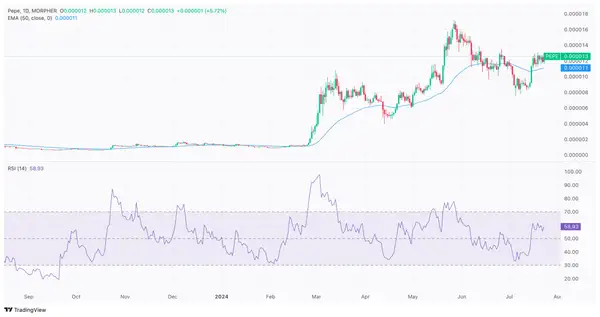
Mantle (MNT)
Mantle is a highly scalable layer-2 solution for Ethereum, designed to enhance the network’s throughput and reduce transaction costs. Utilizing optimistic rollups, Mantle allows for faster transaction processing and increased efficiency without compromising the security of the Ethereum mainnet. This makes it particularly suitable for dApps that require high transaction speeds and low fees. The project aims to support the growing DeFi and NFT sectors by providing a robust infrastructure.
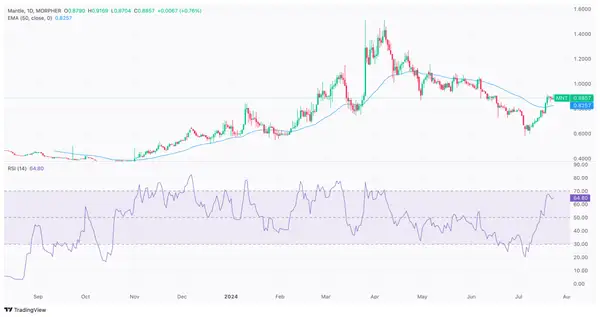
Render (RNDR)
Render Token (RNDR) is a decentralized GPU rendering network that connects users requiring rendering jobs with idle GPU owners. By leveraging blockchain technology, Render provides a secure and efficient way for digital content creators to obtain rendering power on-demand. The project aims to democratize access to high-performance rendering, making it more affordable and accessible for small studios and individual creators. Render is widely used in industries such as film, gaming, and augmented reality.
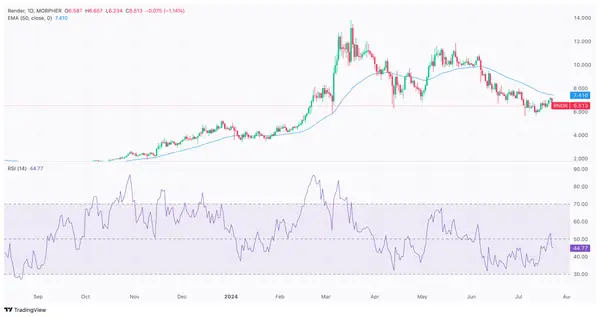
Arbitrum (ARB)
Arbitrum is a layer-2 scaling solution for Ethereum that employs optimistic rollups to enhance the network’s performance. It allows for high-throughput, low-cost transactions while maintaining the security of the Ethereum mainnet. Arbitrum aims to solve Ethereum’s scalability issues by offloading transaction data from the main chain and processing it off-chain. This significantly reduces congestion and lowers gas fees, making it ideal for DeFi applications and large-scale dApps.
StarkNet (STRK)
StarkNet is a permissionless decentralized ZK-rollup (Zero-Knowledge Rollup) that aims to improve Ethereum’s scalability and privacy. By leveraging zk-STARKs (Zero-Knowledge Scalable Transparent Arguments of Knowledge), StarkNet can process thousands of transactions off-chain and bundle them into a single proof submitted to the Ethereum mainnet. This results in lower gas fees and increased transaction speeds. StarkNet’s technology is particularly beneficial for applications requiring high privacy standards and efficient data handling.
Ethereum Name Service (ENS)
Ethereum Name Service (ENS) is a distributed, open, and extensible naming system based on the Ethereum blockchain. ENS converts complex Ethereum addresses into human-readable names, making it easier for users to interact with the Ethereum ecosystem. For example, instead of using a long hexadecimal address, users can send funds to “alice.eth”. ENS aims to improve user experience and accessibility within the blockchain space, and it is widely adopted for various applications, including wallets, dApps, and smart contracts. Check out the latest market insights on ENS now!
These tokens, available on Morpher, come with real-time market insights powered by Morpher AI. Enhance your trading strategy with AI-driven analytics and stay ahead of market trends. Visit Morpher now to unlock smarter trading decisions and make the most out of the vibrant Ethereum ecosystem.
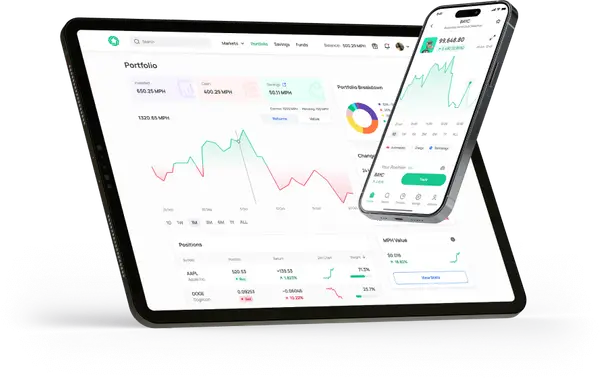
What Lies Ahead for the Ethereum Ecosystem?
The approval of the Ethereum ETF is just one of the many milestones on Ethereum's path to widespread adoption and continued growth. Looking ahead, several developments hold the potential to shape the future of the Ethereum ecosystem:
- Ethereum 2.0: Ethereum 2.0, also known as Eth2 or Serenity, is an upgrade that aims to improve scalability, security, and sustainability. The transition to a proof-of-stake consensus mechanism and the introduction of shard chains will enable Ethereum to handle a significantly higher number of transactions.
- Layer 2 Solutions: Layer 2 solutions, such as Optimistic Rollups and ZK-Rollups, are being developed to address Ethereum's scalability challenges. These solutions aim to increase transaction throughput and reduce fees, making Ethereum more accessible and efficient.
- Interoperability: Interoperability protocols like Polkadot and Cosmos seek to connect disparate blockchain networks, enabling seamless communication and resource sharing. These projects have the potential to unlock new possibilities for cross-chain interactions and collaboration.
As someone deeply entrenched in the Ethereum ecosystem, I am excited to witness the growth and development of these advancements. Ethereum's pioneering spirit and continuous innovation position it as a leading blockchain platform with immense potential.
Furthermore, the Ethereum community is actively exploring ways to enhance privacy and anonymity on the network. Initiatives like zero-knowledge proofs and privacy-focused smart contracts are gaining traction, offering users the ability to transact securely without revealing sensitive information. By prioritizing privacy features, Ethereum aims to cater to a wider range of users, including those with stringent data protection requirements.
In addition to technical advancements, the Ethereum ecosystem is witnessing a surge in DeFi applications. These platforms enable users to access a wide array of financial services, including lending, borrowing, and trading, without relying on traditional intermediaries. The rapid growth of DeFi underscores Ethereum's potential to revolutionize the financial industry and empower individuals to take control of their assets.
Ethereum Price Prediction
The launch of Ethereum ETFs has generated significant excitement and speculation about the future price movements of Ethereum (ETH). As of July 23, 2024, Ethereum opened trading at $3,439, and the introduction of ETFs is expected to bring substantial trading activity. Notably, around $1 billion worth of ETH has been moved into exchange-hosted wallets, indicating a potential for increased volatility and substantial trading volume in the near term.
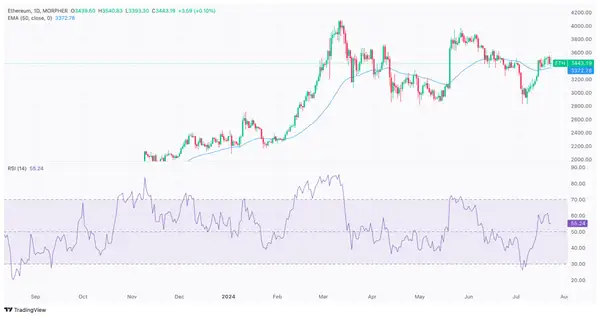
In the short term, predictions for the remainder of July suggest Ethereum's price could range between $2,927 and $3,530, with an average price around $3,228. This range reflects a cautious optimism as the market adjusts to the new ETFs and their impact on trading dynamics. Analysts expect that as more institutional and retail investors enter the market through these ETFs, there could be a stabilizing effect, though initial volatility is anticipated.
Looking ahead to August 2024, the outlook remains bullish, with expectations that Ethereum could reach a maximum price of $3,647. The average price is predicted to hover around $3,354, indicating steady growth driven by increased investor interest and broader adoption of Ethereum-based technologies. Key technical indicators support this positive trend. Ethereum's current price is above its 20-day simple moving average, suggesting a bullish momentum. Additionally, the Relative Strength Index (RSI) is nearing the overbought territory, reflecting strong buying interest but also a potential for correction if sentiment shifts.
Further into the year, long-term forecasts are even more optimistic. Analysts predict that Ethereum could surpass the $4,000 mark by the end of 2024, buoyed by ongoing developments such as the Ethereum 2.0 upgrade and the anticipated Bitcoin halving. These events are expected to enhance Ethereum's scalability, security, and overall appeal to investors. The projected price range for 2024 spans from a low of $2,927 to a potential high of $4,097, with some forecasts suggesting the possibility of reaching new all-time highs.
In conclusion, while the introduction of Ethereum ETFs is set to introduce initial volatility, the long-term outlook for Ethereum remains positive. The combination of technological advancements, increased institutional interest, and broader market trends suggest that Ethereum is well-positioned for significant growth in the coming months and beyond. Investors should stay informed and consider these evolving dynamics when making investment decisions.
FAQ: Revisiting the Main Points
Let's recap the main points discussed in this article:
- The approval of the Ethereum ETF opens up new investment opportunities for individuals seeking exposure to Ethereum without directly holding the digital asset.
- The Ethereum ecosystem is a dynamic and diverse community that fosters innovation through its decentralized and programmable platform.
- Key participants in the Ethereum ecosystem include the Ethereum Foundation, developers, miners, and investors.
- Tether, Chainlink, Uniswap, and Aave are among the top Ethereum ecosystem tokens by market capitalization.
- Ethereum's future holds promising developments, such as Ethereum 2.0, layer 2 solutions, and increased interoperability.
Discover the transformative power of the Ethereum blockchain with Morpher, a cutting-edge decentralized trading platform. As part of the vibrant Ethereum ecosystem, Morpher leverages blockchain technology to offer innovative trading solutions that redefine traditional finance.
Get Started with Morpher Today!
- Seamless Integration with Ethereum: Benefit from the security and decentralization of the Ethereum blockchain.
- Trade with Zero Commission: Maximize your returns by trading stocks, commodities, and cryptocurrencies without incurring any fees.
- Infinite Liquidity: Enjoy uninterrupted trading with guaranteed liquidity.
- Stake and Participate: Stake MPH tokens to earn rewards and have a voice in platform governance.
Morpher exemplifies the innovative spirit of the Ethereum ecosystem, providing you with unparalleled trading opportunities and financial freedom. Visit Morpher to learn more and start your trading journey. Explore how Morpher and the Ethereum ecosystem are shaping the future of decentralized finance.

Disclaimer: All investments involve risk, and the past performance of a security, industry, sector, market, financial product, trading strategy, or individual’s trading does not guarantee future results or returns. Investors are fully responsible for any investment decisions they make. Such decisions should be based solely on an evaluation of their financial circumstances, investment objectives, risk tolerance, and liquidity needs. This post does not constitute investment advice.

Painless trading for everyone
Hundreds of markets all in one place - Apple, Bitcoin, Gold, Watches, NFTs, Sneakers and so much more.

Painless trading for everyone
Hundreds of markets all in one place - Apple, Bitcoin, Gold, Watches, NFTs, Sneakers and so much more.

